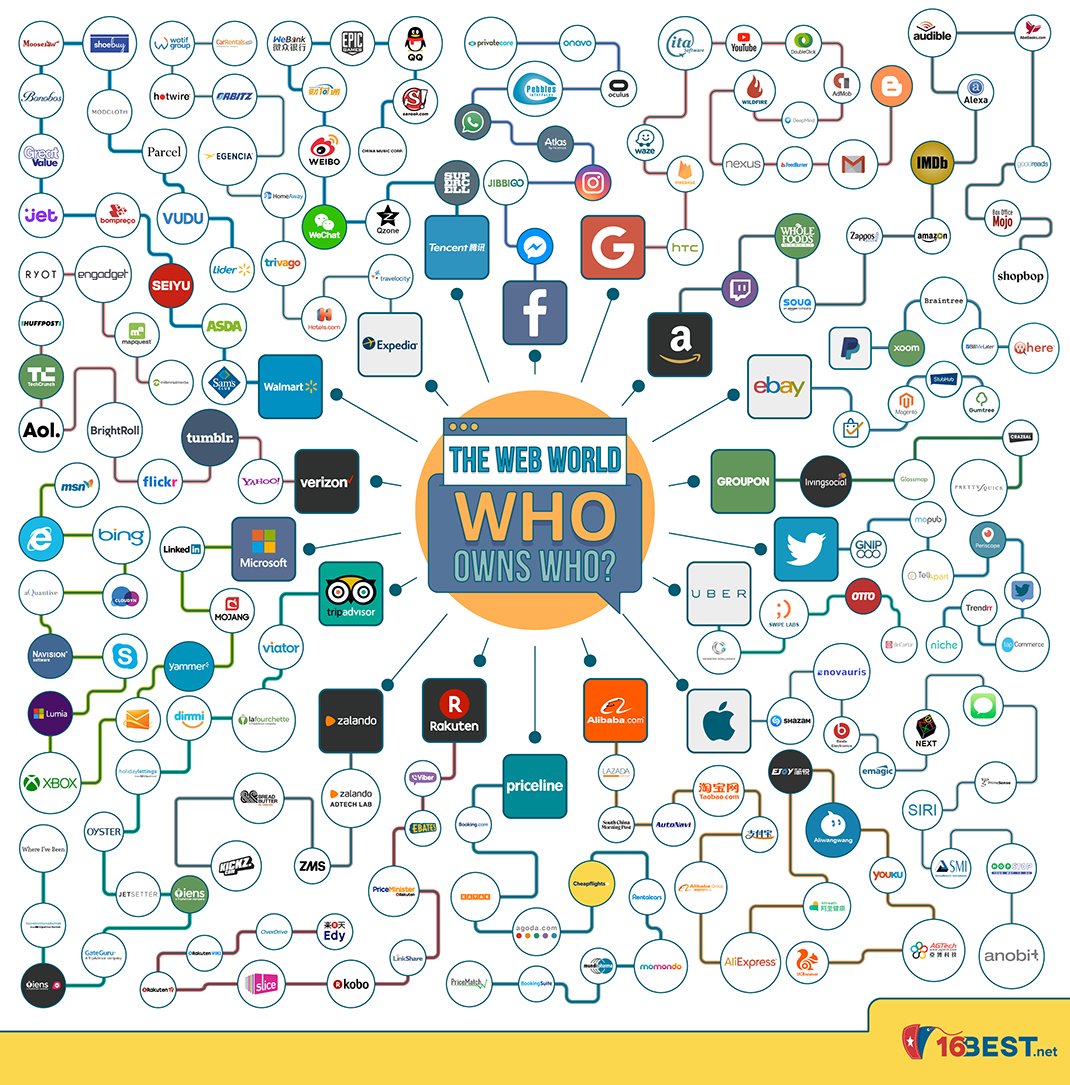In the brick and mortar world, decades of consolidation has led certain conglomerates to wield massive amounts of control in the banking, consumer goods, alcohol, and auto sectors.
And although the internet is incredibly vast in scale and much newer, it’s also heading in a similar direction.
As a result, it’s not unusual to see behemoths like Facebook, Alphabet, and Amazon leveraging their size, networks, and market leading positions to buy up competitors while also making other strategic acquisitions. This ongoing consolidation has created a vast web of subsidiaries, providing each parent organization with additional insurance in maintaining their position at the top of the digital food chain.
The Connected Web
Today’s infographic comes to us from 16Best, and it shows the companies or websites that are owned by the bigger fish.
They fall into two categories, generally:
1. Gobbling Up the Competition
What better way to ensure dominance than to eat up all of the smaller fish that do the same thing you do?
Look at Expedia, a company that owns fellow travel sites Travelocity, Hotels.com, Trivago, Orbitz, Hotwire, and CarRentals.com. Another example is Groupon, a company that bought competitor LivingSocial, as well as Crazeal (originally a local deal site in India).
2. Strategy and Tactics
Whether it is future proofing, apparent synergies, or filling a weakness, this broad category makes up the majority of situations. Here we see the internet giants making strategic acquisitions to ensure future success.
A good example of this is Facebook’s acquisition of Oculus, which allows the social network giant to enter into the VR business – the exact type of new venture that would be nearly impossible to do without help and expertise in a complex technical field.
Correction: A previous version of this graphic listed PayPal as a subsidiary of eBay. PayPal was spun off into a separate publicly traded company in 2015.
Article by Jeff Desjardins, Visual Capitalist





